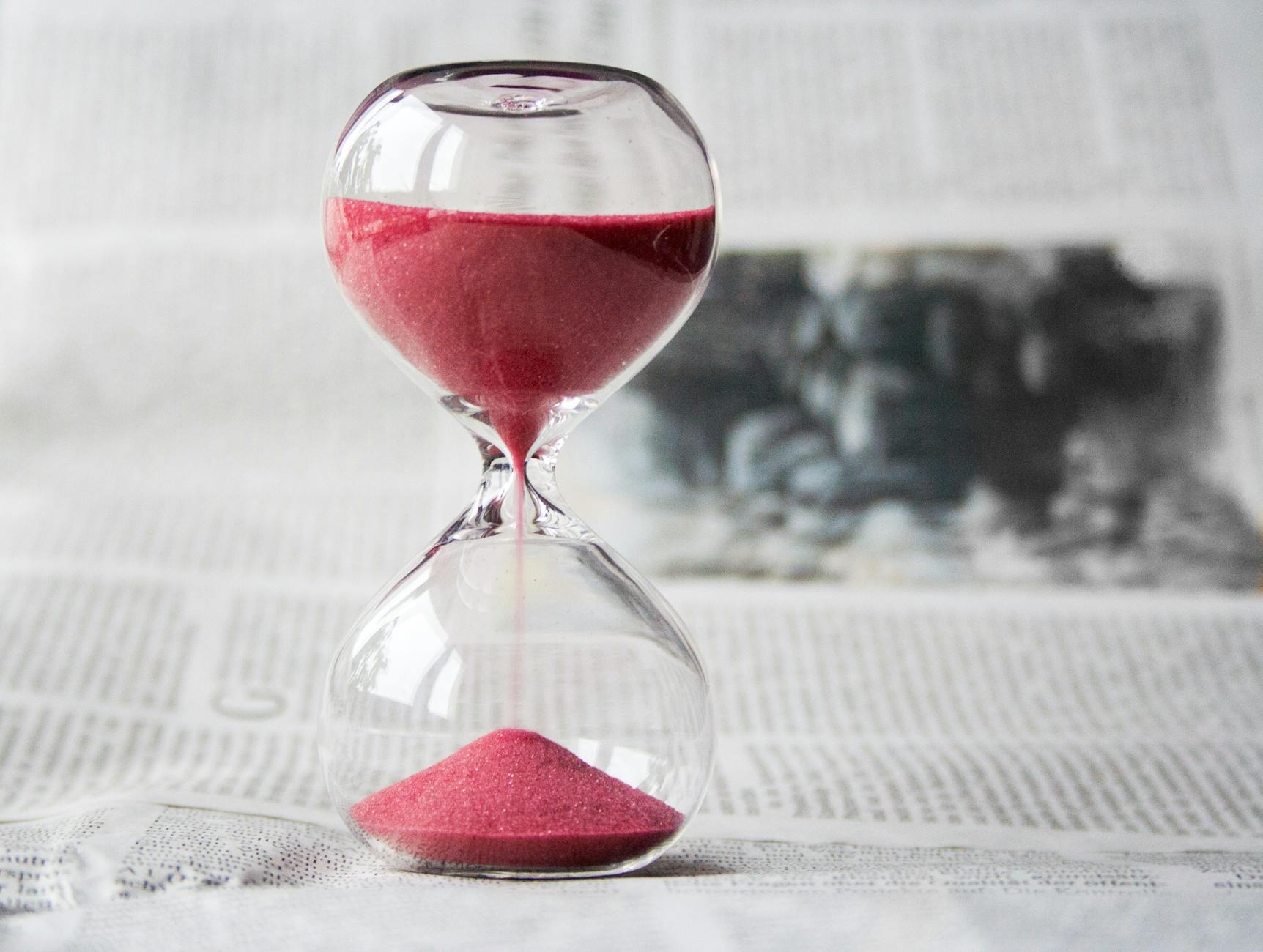When I was a new freelancer, I had just finished two gruelling years of working and going to school full-time. My days were packed: opening the office at 7 a.m., working for a few hours, attending classes for 6-8 hours, and then returning to close the office. By the time I transitioned into freelancing, I was mentally and emotionally drained.
Despite having regular freelance work, I went from a rigid, highly scheduled routine to having complete control over my time. And honestly? My days became chaotic. Work took hours longer than it should have because I had the TV on in the background, took too many snack breaks, and often multitasked—checking Facebook (back when it was still cool) or email while trying to write articles. I was doing just enough to pay the bills but wasn’t finding new clients or growing my business.

It felt like there wasn’t enough time in the day, but the truth was I was filling my time with activities that weren’t to my work. I told myself I was just giving my brain a needed break, but those “breaks” ultimately took up a lot of time and forced me to context switch all too often. Sound familiar?
If you’re new to freelancing, you’ll quickly realize that while the freedom to set your own schedule is amazing, it also means there’s plenty of room for distraction. Here’s how to take control of your time and build a schedule that’s productive and sustainable—using effective freelance time management strategies.
The freelance time management challenge
As a freelancer, your days will likely include several types of activities:
- Client work: Requires focus, concentration, and brain power (possibly also caffeine).
- Administrative work: Tasks like scheduling meetings, invoicing, and sending quotes. Boring but necessary.
- Marketing yourself: Finding new clients is an ongoing necessity, even if it’s not your favourite thing. it’s rarely anyone’s favourite thing.
- Professional development: Learning new skills, technologies, or services to offer.
- Creative pursuits: While not strictly work-related, nurturing your creativity can make you a better freelancer. It can also inspire you to try new things in your business.
It’s a lot to manage within an eight-hour workday (because you shouldn’t regularly work more than that—except in rare cases or when aiming for a compressed workweek). So how can you maximize your time without burning out?
9 tips for structuring your day as a freelancer
1. Prioritize the most important work during your peak productivity hours
There are people who say you should do your marketing and business work during your most productive time and there are those who say you should do client work during those times. I say, determine which is most important on a given day and do that work during that time. If you have a pressing client deadline coming up, use your productive time for that. If it’s been a few days since you’ve marketed yourself and there’s nothing pressing due today, save your productive time for marketing.
Rather than having a hard-and-fast rule, allow this one to be flexible. What’s most important here is that you know and understand your most productive time and can prioritize the most important work. If you’re a morning person, schedule your most crucial tasks early in the day. Personally, my brain doesn’t hit its stride until around 10 or 11 a.m., so I typically block 11-3 for client work or marketing, depending on what I need. Experiment to find what works best for you. If you’ve gotten way behind on invoicing (please don’t get too far behind on invoicing), maybe use your productive time for that one day a week.
2. Schedule low-energy tasks for slower times
Use your lower-energy hours for administrative tasks. For me, that’s late afternoon (3-5 p.m.), which is when I handle things that don’t require deep focus, like professional development, or planning for upcoming client projects. For example, if I have a project where I’m submitting 10 blog posts, I’ll use my afternoon time to set up the briefs and workflows for each of those, or start my research.
3. Use flexible time for marketing and creative work
I dedicate the time before my client work (around 9-11 a.m.) to activities like marketing, professional development, and creative pursuits. These low-stakes tasks help warm up my brain for more intensive work later in the day.
4. Limit email checking to specific times
Resist the urge to check your email first thing in the morning. This can easily eat up your most productive hours. Instead, set specific times to check and respond to emails—perhaps once mid-morning and again late afternoon.
5. Automate repetitive tasks
Save time by automating as much as possible. For example, use a scheduling tool linked to your calendar and Zoom account to set up meetings. This eliminates back-and-forth emails and saves hours each week. I was stunned by how many hours I saved having an automated system for booking meetings.
6. Minimize distractions
Turn off notifications while doing focused work. It’s tough to switch between tasks like writing and texting a friend. Use techniques like the Pomodoro Method (25 minutes of focused work followed by a 5-minute break) to stay on track, or create your own system that helps you stay productive.
7. Plan your day around key priorities
Each day, identify one big task that must be completed and two or three secondary tasks. Avoid overloading your to-do list, which can lead to feeling overwhelmed and unproductive. (Hint, if you regularly have 30 items on your list and 20 of those items are regularly carried over from one day to the next without being crossed off, you likely have too many items on your list–and I say that as someone who loves lists. I once had a boss tell me my use of lists was “weird and unnecessary.”) If necessary, have 3 lists: 1. a list of things that must be done today, 2. activities that need to be done in the next few days, and 3. those with a longer timeline.
8. Keep a “quick task” list
Maintain a list of tasks that take fewer than 10 minutes. Use this list during unexpected gaps, like when a meeting is delayed or you finish a project before your focused time ends. These small wins can add up over time.
9. Maintain your boundaries
This is less about building your schedule, but sustainable freelance time management involves having boundaries with clients, family, and loved ones. Your schedule won’t be sustainable if every time someone shows up at your house or calls you during work hours, you drop everything. It also won’t be sustainable if every time your client contacts you with work (or small tasks) you put everything on hold until you’ve helped them. You must set and maintain boundaries with your clients and the people in your life to protect your work time. If you don’t respect your time, they won’t.
Final thoughts on freelance time management
When I started freelancing, my lack of structure felt restful but wasn’t sustainable. I sent invoices weeks late, wasn’t marketing myself, and only did enough to scrape by. On the flip side, cramming too much into your day will lead to burnout. The sweet spot is feeling accomplished and moving your business forward without feeling overwhelmed.
Generally speaking, there is enough time in the day to get the important stuff done—you just have to stop the unimportant stuff from taking over. With these freelance time management tips, you can design a schedule that keeps your business thriving and your stress levels low.
Here’s to creating a schedule that works for you and keeps your freelancing business thriving!
Looking for more tips on a successful freelance writing career? See my other posts:
How to get comfortable networking as a freelancer
How to set boundaries with clients
Why do you want to start freelancing?
If you’re struggling to write about yourself (and what freelancer hasn’t?) check out my guide, filled with tips and hints for writing about yourself and your business, “Words that Attract Clients“. It’s filled with actionable tips and exercises to get you confidently writing about yourself and connect you with your ideal clients. Get your copy today.
